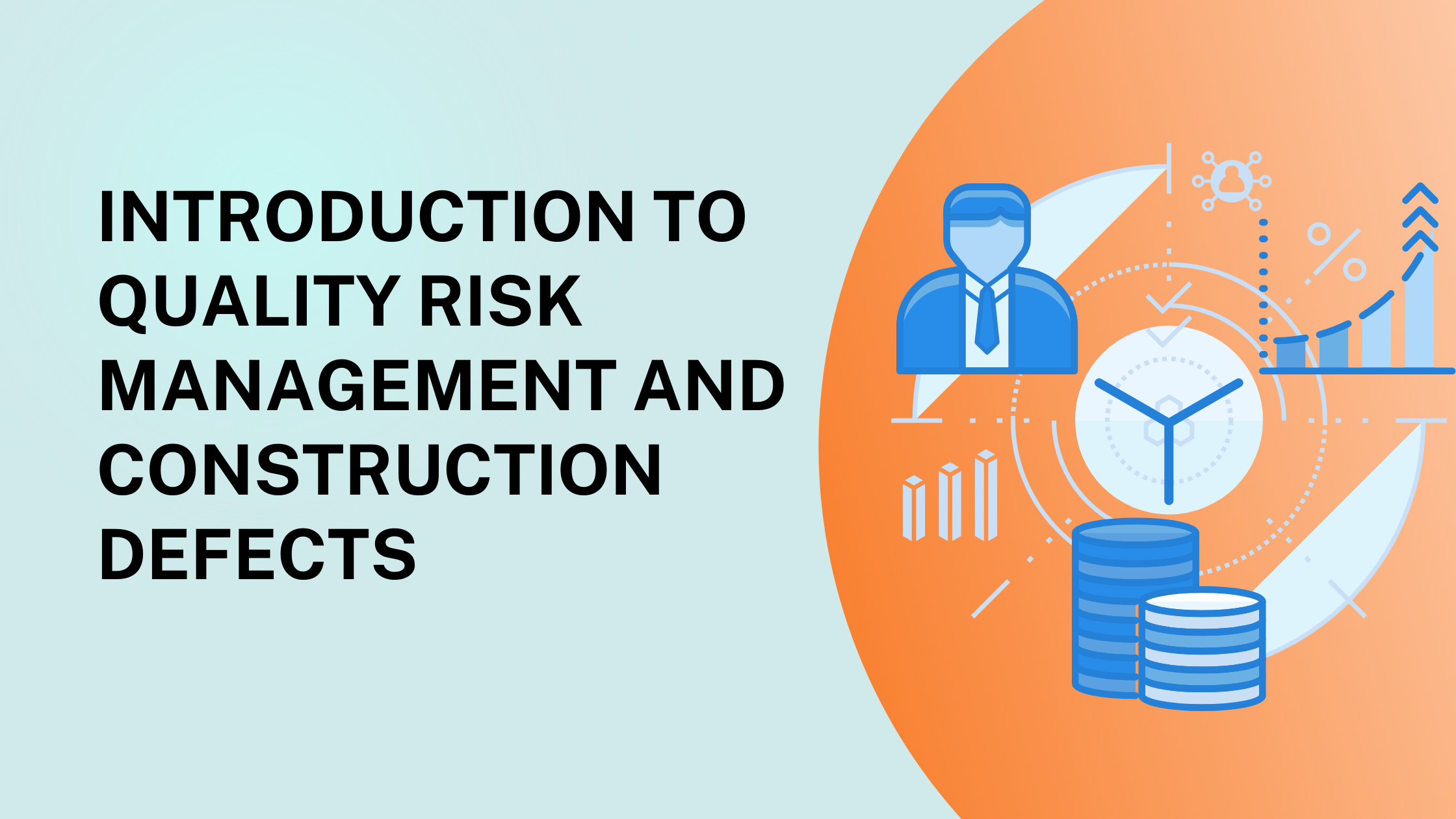INTRODUCTION TO QUALITY RISK MANAGEMENT AND CONSTRUCTION DEFECTS
“Quality is a Risk”
What is Quality Risk Management?
A systematic, risk-based approach to quality management is known as quality risk management. Zero Defects, or No Rework, is the goal of QRM. It is a philosophy as well as an operational plan. Along with money, time, and safety, it is one of the most important aspects of project success. It has a direct impact on material, equipment, and labor costs in the short term. In the long run, it has a direct impact on the company’s entire reputation. Satisfied owners and stakeholders are the company’s most valuable marketing asset.
What is the definition of Construction Defects?
A flaw/ defect in a building’s or structure’s design or construction that results from a failure to design or construct in a reasonably workmanlike way, and/or in conformity with a buyer’s reasonable expectation.
There are two categories of construction defects/flaws: hazardous defects and passive problems.
•Dangerous defects have the potential to fail, resulting in personal injury or property damage.
•There is no greater risk of injury or property damage due to passive faults.
How do Construction Defects happen?
There are only 4 ways construction defects happen:
Ø Design Deficiencies
Ø Material and/or Equipment Insufficiencies
Ø Construction Process Failures
Ø Operation and Maintenance Issues
In many cases, the defect is a combination of these 4 causes/reasons
The GC and their subcontractors’ control 2 of the 4 causes/reasons:
Ø Material and/or Equipment Insufficiencies
Ø Construction Process Failures
What are the possible impacts of Construction defects?
. It affects the company’s reputation;
. It leads to cost overrun due to repair/replacement
. The cost of insurance/bonds
. The long tail for claims – average claim takes 2-1/2 years to resolve
. Time spent handling Construction Defect claims is time away from bidding and completing projects
What are the most common Construction Defects?
1. Approximately 75% of Construction defects involve water in some way.
2. Building envelope and structure:
•Door, window, and exterior wall deficiencies
•Roof leaks
•Damp proofing and waterproofing deficiencies
•Deck and balcony deficiencies
•Foundation movement
3. Infrastructure:
•Drainage deficiencies
•Differential Settlement
•Retaining wall collapse
•Compaction and structural deficiencies
•Electrical and HVAC deficiencies – condensation
•Plumbing and other leaks to internal systems – “wet walls”
•Sound, vibration, odor, vapor transmission, and code compliance
4. Design Deficiencies:
Some questions that should be reviewed:
•How clear is the design?
•Is it unduly vague?
•What’s the experience level and reputation of the architect/engineer?
How do we deal with Design Deficiencies?
Solution – Transfer the Risk
A Professional Liability Policy for architects, engineers, and contractors, which protects professionals against liability incurred as a result of errors and omissions in performing their services.
5. Product or Material Insufficiencies: Sometimes materials are defective or damaged.
•This can lead to failure despite proper design and construction.
•In other cases, inferior products may not function as anticipated.
How do we deal with Product or Material Insufficiencies?
Solution – Accept or Transfer the Risk
•Accept-Include documented QA/QC policies and procedures.
•Contractual Risk Transfer – Pass along what would otherwise be your own risks of loss, and proper certificates and warranties from manufacturers.
What is the Construction Process Failures?
Subpar or faulty workmanship on building projects can lead to a host of defects, including water infiltration, mold, and pest infestation, cracks in foundations or walls, dry rotting of wood, and electrical or mechanical issues.
How do we deal with Construction Process Failures?
Solution – Accept or Transfer the Risk
•Accept-Include documented quality assurance/quality control policies and
procedures.
•Contractual Risk Transfer – Pass along what would otherwise be your own
risks of loss to subcontractors.
•Errors and omission insurance to protect against liability for committing an
error or omission during a project.


